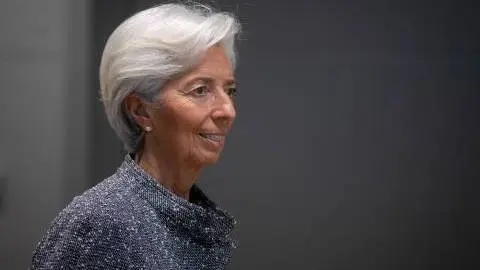ECB: Taking a short break without being breathtaking
ECB provides more, even cheaper, liquidity but keeps its QE dry. Suffice to say Lagarde is still trying to find her own fully convincing ‘whatever it takes’ moment
It was a bit as expected
The European central bank has decided to take a short break of reflection to take stock of all recent measures and their possible impact on the eurozone economy while turning some liquidity screws. Like everybody else, the ECB is also grappling to understand how severe the crisis actually is and how any recovery would look like.
According to ECB's president Christine Lagarde, the Bank has several scenarios (due to be published tomorrow) in which the eurozone could shrink by something between 5% and 12% this year. In the ECB’s worst-case scenario, the ECB seems to assume that the eurozone could see an unprecedented hit of something like -15% QoQ in 2Q after today’s -3.8% QoQ for 1Q20.
Nonetheless, there are still a few additional liquidity measures that the ECB decided on today:
- A cut of the interest rates on the targeted longer-term refinancing operations (TLTRO III), from 25bp below the refi rate and 25bp below the deposit rate for banks reaching the ‘lending performance threshold’ to 50bp below refi and 50bp below the deposit rate. Together with last week’s easing of the collateral framework, this should form what the ECB calls a ‘liquidity backstop’ and shows that the ECB can cut interest rates without cutting the policy interest rates.
- A new series of non-targeted pandemic emergency longer-term refinancing operations (PELTROs) to support liquidity conditions. These will be seven additional operations until September 2021, which will be carried out as fixed rate tender procedures with full allotment, with an interest rate of 25bp below the refi rate.
It is obvious the ECB is trying to support the eurozone economy mainly through ensuring there is enough liquidity and extremely favourable financing conditions for the banking sector, as this is key in providing credit to the real economy.
No changes to PEPP....yet
With regards to all other instruments, there were no changes today but Lagarde extensively tried to stress her new version of ‘whatever it takes’, i.e. the ECB is ‘fully prepared to increase the size of the PEPP and adjust its composition, by as much as necessary and for as long as needed.’
Lagarde said that the ECB would not accept fragmentation and that PEPP could be adjusted in terms of size and composition to ensure that monetary policy is transmitted to all sectors and countries. On OMT, interestingly, Lagarde performed a strange balancing act, which seems to indicate the ECB isn't really that keen.
Key takeaways
i) The ECB cannot walk on water, but it can keep interest rates unchanged and at the same time cut rates;
ii) The main focus was on providing cheap and ample liquidity;
iii) PEPP will be the main policy tool and there seems to be clear willingness to increase its size if need be.
Comprehensible but not breathtaking
Lagarde is still trying to find her own fully convincing ‘whatever it takes’ moment. Today’s decisions and explanations were all comprehensible but not breathtaking.
To give some credit, in the current situation and in the next phase when the eurozone economy enters the recovery, the ECB will not be in the driver’s seat, fiscal policy will have to do the heavy work. The ECB can only provide financing power for governments and companies.
Unless the ECB follows up on its claim - as was heard multiple times today - supporting households and firms in the eurozone. But this would require launching the helicopters.
This publication has been prepared by ING solely for information purposes irrespective of a particular user's means, financial situation or investment objectives. The information does not constitute investment recommendation, and nor is it investment, legal or tax advice or an offer or solicitation to purchase or sell any financial instrument. Read more
Download
Download snap
30 April 2020
ING’s Covid-19 roundup: Lagarde and Powell’s whatever-it-takes moment This bundle contains 11 Articles